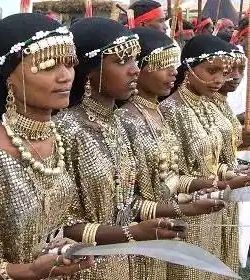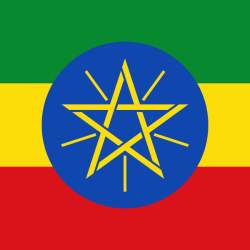The history, culture, and political resistance of the Afar People, including their conflicts with the Abyssinians, the Adal Sultanate, and modern Ethiopian powers.
The Afar People, also known as the Danakil, are a Cushitic-speaking ethnic group primarily living in the Horn of Africa. Renowned for their resilience and fierce independence, the Afar inhabit the arid and harsh regions stretching across northeastern Ethiopia, southern Eritrea, and Djibouti. This semi-nomadic community has not only preserved its unique culture and social structure over centuries but has also played a critical role in the geopolitical history of the region.
Geographic Distribution of Afar Communities
The Afar reside in a geographic corridor known as the Afar Triangle, covering parts of Ethiopia’s Afar Region, Eritrea’s Southern Red Sea Region, and Djibouti. This region includes the Danakil Depression—one of the hottest and most inhospitable places on Earth.
Population and Language
There are approximately 2 million Afar people, with the majority residing in Ethiopia. They speak Afar af, a Cushitic language, and follow Sunni Islam, which is deeply intertwined with their traditions.
Overview of Afar Identity
The Afar identity is built on values of honor, loyalty, and autonomy. Clan-based social systems are central to governance, and elders wield significant influence. Despite external pressures, they have preserved their traditional political, cultural, and religious systems through centuries of upheaval.
Historical Relations with Abyssinians and Aksumites
The Afar’s relationship with Abyssinia dates back to antiquity, during the era of the Aksumite Empire. Aksum’s key seaport, Adulis, was located within Afar-inhabited territories and served as a major trade hub with South Arabia, India, and the Mediterranean world.
Early Trade Links at Adulis
Adulis was a vibrant center for maritime trade, controlled in part by coastal Afar tribes. Goods such as incense, ivory, and textiles passed through this port, connecting the Horn of Africa to global markets.
Cultural Exchanges and Rivalries
While trade fostered interaction, there were also tensions. The Afar’s desire for autonomy often clashed with Abyssinian expansionism, laying the foundation for future resistance.
The Afar and the Muslim-Christian Conflicts
The medieval period saw the Afar caught between warring Islamic and Christian powers. The Adal Emirate, a Muslim state, included Afar leaders and warriors in its campaigns against Christian highlanders.
Adal Emirate and Its Influence
The Afar aligned with Adal in major battles, such as those led by Imam Ahmed Gragn. Their involvement was both religious and strategic, aimed at protecting their territory and influence.
Role of the Afar in Medieval Conflicts
As key military and trade actors, the Afar played a balancing role between empires. However, after the decline of Adal in the late 16th century, they faced renewed pressure from Oromo and Abyssinian expansionists.
Decline of Adal and Effects on Afarland
Adal’s collapse fragmented the region’s Muslim power base. The Afar had to rely increasingly on their own traditional structures to fend off external threats.
Traditional Political Structure of the Afar
The Afar political system is deeply rooted in tribal law and elders’ authority. Several ranks of leaders—including ‘Amoytas, Derders, Redantus, Momins, and Makabantus—handled governance, justice, and conflict resolution.
Role of Traditional Leaders
These leaders were not just figureheads. They represented the voice of the people, managed alliances, oversaw land disputes, and led in times of war and peace. Their authority often rivaled that of kings and emperors in the region.

Autonomy and Governance Systems
Despite repeated interventions from neighboring empires, the Afar maintained semi-autonomous political systems for centuries. This autonomy was defended through military resistance, diplomacy, and strategic retreats.





